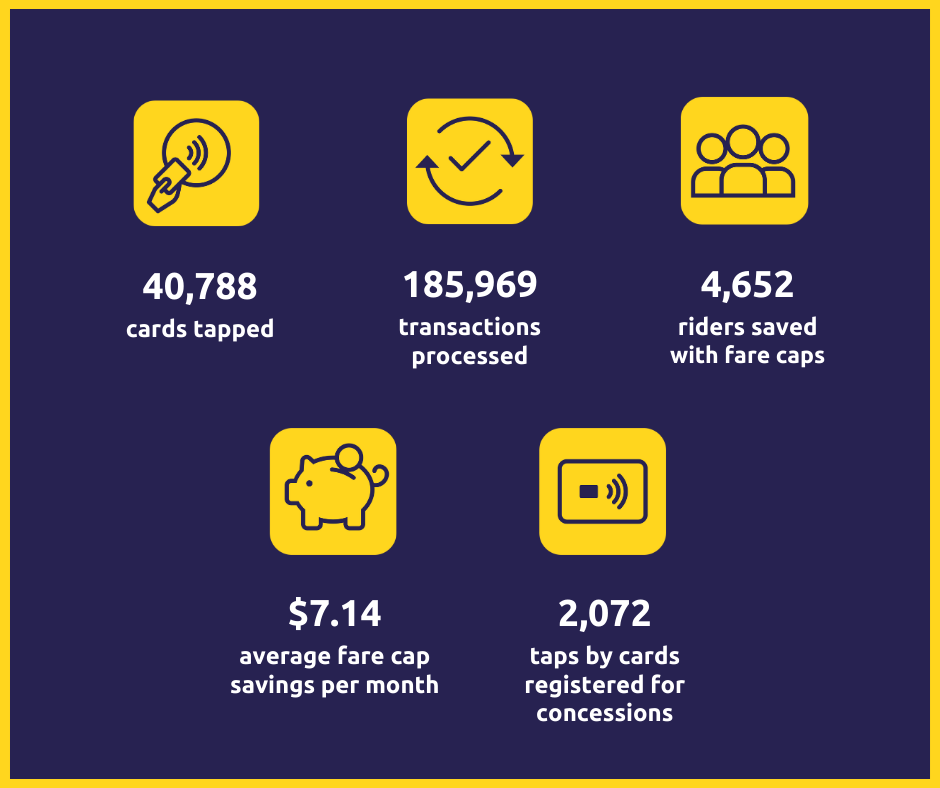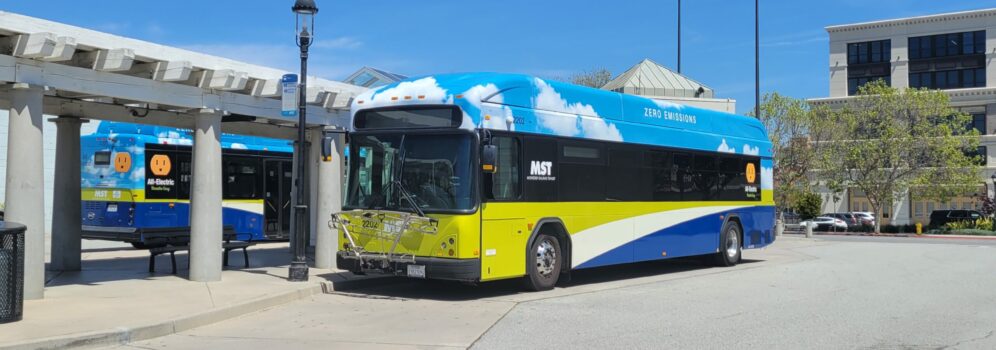Monterey-Salinas Transit (MST) defines its values as ‘connecting communities, creating opportunities, and being kind to our planet’, and its deployment of a contactless open-loop fare collection system is aligned with these principles.
The County of Monterey includes a large number of people who have a low income, as well as many seniors and students, among its inhabitants. Over 80% of MST passengers use the bus because they don’t have a car or are unable to drive, and 20% could not make essential journeys if an MST bus were not available. Over 75% of the agency’s riders have household incomes of under $40,000 a year, while Monterey County consistently ranks as one of the most expensive places to live within the United States.
Mobility for those who need it most
Post-Covid, many agencies have focused on reinvigorating flagging ridership and increasing fare revenue. MST consciously decided to focus on its values above all else, and on providing mobility services in the communities that need it most. This is primarily in those areas where poverty is the highest and car ownership is the lowest.
Providing transit is the first step, but the agency has also considered how the fare system it operates can maximize fare equity and inclusion so that more people are financially able to use it. MST’s contactless demonstration, launched in May 2021, tested the ability of open-loop fare collection to give riders a simple, affordable way to access public transit.
The deployment made MST the first transit agency in California – and the first in a small urban or rural area in the United States – to introduce contactless open-loop fare collection. But ultimately, the measure of success for MST was not the achievement of being ‘first’. It wanted to ensure that open-loop fare collection would benefit every rider.
In particular, it aimed to show that no rider would be left behind, including the unbanked or underbanked (which includes one in two black and Latino households in California), or anyone without access to a bank-issued contactless card.
State and industry collaboration
Following the demo, MST continued to work closely with the California State Transportation Agency (CalSTA), the California Department of Transportation (Caltrans), and the California Integrated Travel Project (Cal-ITP calitp.org). It has now selected technical partners from Cal-ITP’s Mobility Marketplace to transition to a full ‘tap-to-ride’ roll-out across its network.
Vendors Kuba (for fare validators), Littlepay (for fare calculation software), and Elavon (for payment processing) have been selected from among those awarded Merchant Service Agreements by the State of California. They are providing their services within a modular system.
This blueprint can be reused by any transit agency in the US at a cost-effective price, with fast onboarding – instead of reinventing the wheel repeatedly.
MST is continually evolving the solution to solve challenges such as how to enable PAYG riders to experience best value fares without upfront investment in period passes, how to create a digital tool to offer concessionary fares linked to an EMV card, and how to ensure that those without a bank account can use the system and experience the same benefits.
PAYG fare capping rewards
With its contactless open-loop system, MST introduced fare capping as a pay-as-you-go alternative to period passes, providing value to riders who travel frequently but can’t pay upfront. Once passengers hit a fare cap, further journeys are free within the given period.
This immediate reward is making budgeting for transportation costs easier for those whose finances are stretched to the limit.
Digitally verified concessions
The agency was the first to offer contactless-enabled automatic benefits for seniors and persons with disabilities. This was rolled out to include veterans in November 2023.
The Cal-ITP Benefits system enables any eligible party to log in to a government portal to verify their identity and link a payment card to a 50% concession. This is applied automatically whenever they tap to travel using the linked card.
The reinvention of the concessionary fare within this open-loop fare collection framework removes the administrative burden on riders and agencies to produce and process paper documents. It is facilitated by Cal-ITP, the California Department of Technology, and payment service provider Littlepay (which enables card tokenization).
‘No strings attached’ banking alternatives
In addition, MST deployed Cash App, which provides a virtual or physical debit card with EMV capability to people unwilling or unable to open and fund a traditional bank account. To register, users only need a California State ID and a small amount of funds to be loaded, rather than a social security number and a minimum balance.
This was a strategy to welcome the unbanked and underbanked to be included in the open-loop system – and, more broadly, to bring them into the financial ecosystem.
While Cash App did not initially attract widespread use, its introduction at MST catalyzed better money management and financial well-being among some of Monterey’s lowest-income inhabitants. For some, it brought freedom from high-interest check-cashing outlets and ‘no strings attached’ access to a tool that acts like a bank card.
Around 90% of new Cash App customers in Monterey County used their card for the first time on an MST bus during the demo, and about 90% of those later used it to buy other things. This shows the powerful impact it is having on changing payment behavior.
System reliability boosts adoption
The demo approach allowed MST to monitor the fare payment reader hardware, fare calculation software, Wi-Fi connectivity, and the user behavior data supplied in the back office. This presented a chance to fine-tune the system, as well as customer messaging and staff training, before rolling out the contactless system permanently.
This process uncovered some issues with validator connectivity for a short period when the local service area switched from 3G to 4G. As a result, the user experience was variable, more driver interaction was needed, and a small number of transactions were not processed.
As the deployment transitioned from demo to rollout, Kuba validators were selected and installed in September 2023. There was no validator downtime in the first 90 days, and well over 50,000 transactions were processed. The system’s increased reliability enables MST to accelerate EMV adoption and deliver the benefits the system offers to more riders, including those who need accessible, affordable public transit the most.
Commitment to leave no rider behind
As MST continues to prioritize fare equity and inclusion, it is seeking an equivalent to the Cash App that has a wider appeal to the Spanish-speaking members of its community. It has started talks with financial technology company Alza, which is expressly ‘not a bank.’ It offers a similar proposition to Cash App but is specifically aimed at helping meet the banking needs of Latin or Central Americans who have moved to the U.S.
Where Cash App can be opened using a State of California ID, Alza accepts 40 types of ID from across Latin America. Crucially, Alza has developed its marketing materials in Spanish first. MST believes its product could perfectly complement Cash App, appealing to Spanish-speaking riders that traditional banks do not serve.
In addition, MST is keen to take advantage of further development of the Cal-ITP Benefits Tool. It’s on the roadmap to seek a partner that can enable eligibility verification for low-income people – and one option may be to team up with a food stamp program.
This will ensure that those struggling to purchase the basics will have automatic access to discounts for their transportation. In the US, transport costs are second only to housing costs, which could represent a clear step towards more affordable living for many people.
Measurable results
Adoption rate of Monterey-Salinas Transit’s ‘tap to ride’ system has been growing steadily. Increasingly, more people are enjoying the ease and convenience of the contactless payment experience using the card or device they carry everywhere. Unlocking pay-as-you-go fare capping and digitally verified concessions, they automatically pay the best value fare for their trips.
The transit agency plans to promote the system with further marketing. Building awareness among riders is vital to ensure that it continues to connect communities and create opportunities for the people of Monterey County.
Results achieved between May 2021 and January 2024:



